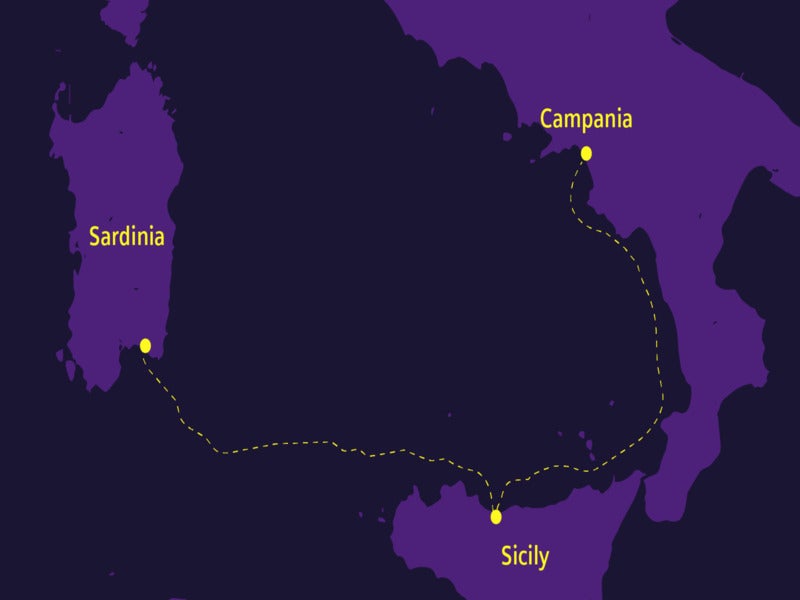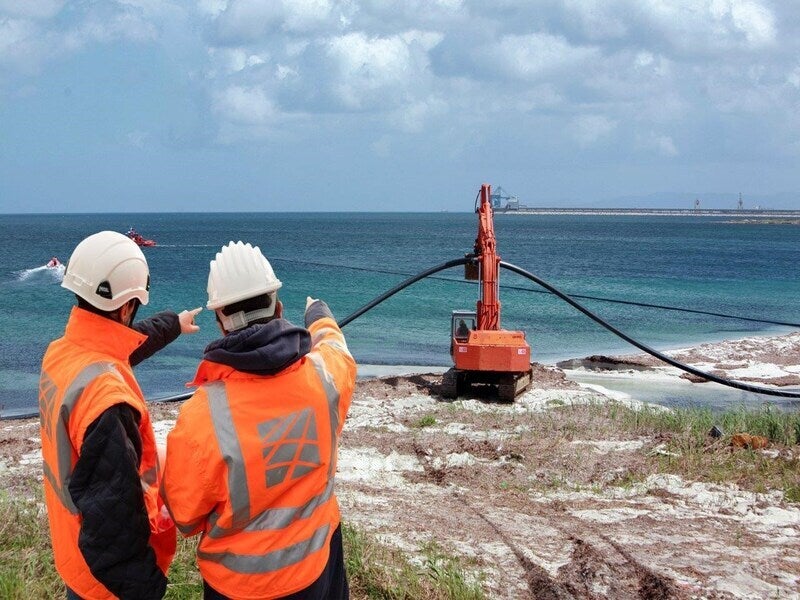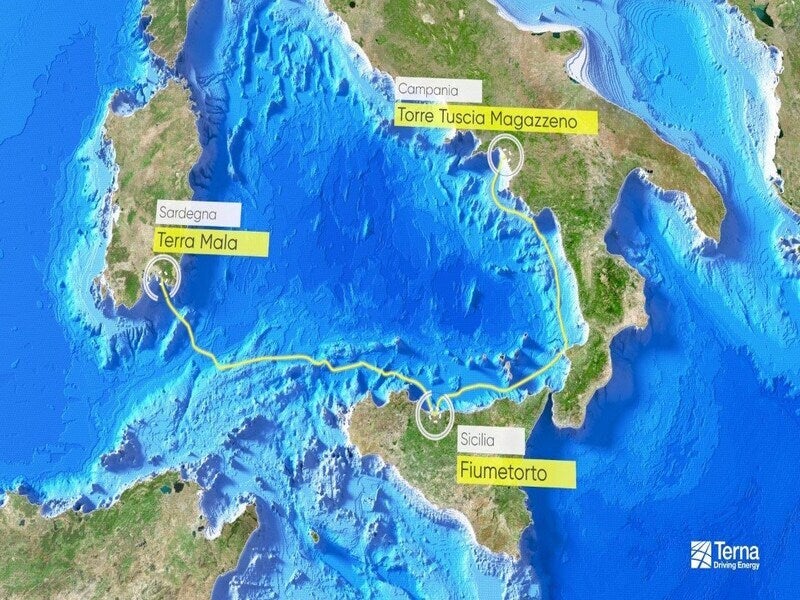Tyrrhenian Link is a planned undersea connection that will enable electricity transmission between the Italian peninsula and the two islands of Sicily and Sardinia.
The 970km long bipolar High Voltage Direct Current (HVDC) link will have a capacity of 1,000MW. Around 60km of the power lines will be over land.
Terna, an Italian transmission system operator, is the developer of the project.
The project will have two sections- an East section connecting Sicily to Campania and a West section from Sicily to Sardinia.
The Italian Ministry of Ecological Transition (MiTE) has signed a decree authorising work on the East Section of Tyrrhenian Link. The ministry formally started the authorisation procedure for the West branch in October 2022.
The East Branch cable is expected to become operational in late 2025 and the complete project is planned to be fully operational in 2028.
Overall, the interconnection is expected to entail an investment of around €3.7bn.
Once complete, the high voltage link will improve electricity exchange capacity and reliability of the grid, as well as support the development of new green energy sources.
Tyrrhenian Link- East Section
The East section, approximately 490km long, will connect the Fiumetorto landing point in the municipality of Termini Imerese in Sicily with Torre Tuscia Magazzeno, near Battipaglia in Campania.
In Sicily, the underground cables will run through the Termini Imerese industrial area to the substation located in Caracoli.
In Campania, the underground cables will be laid along existing roads to connect the subsea cable from the landing point to the new converter substation in Eboli. The switching station will also be in Eboli.
The underground cables from the Fiumetorto landing point will run through the Termini Imerese industrial area in short sections. The line will be integrated to the Italian Transmission Grid via a DC-to-AC converter station to be built in an area neighbouring the existing Caracoli electrical substation.
The project is expected to employ horizontal directional drilling (HDD) technique for the landing point of the underwater cables to avoid open pit excavations on the beaches.
Tyrrhenian Link- West Section
The West Section of Tyrrhenian Link will stretch approximately 480km connecting the Fiumetorto landing point to the Terra Mala landing point in Sardinia.
Around 30km underground onshore segment will run along existing roads to the converter station located in Selargius.
Tyrrhenian Link Infrastructure
Tyrrhenian Link’s cables with voltage level +/- 500kV will be manufactured using Mass Impregnated technology and will be equipped with double wire armour.
The undersea cable will rest on sea floor and will be protected with reinforced concrete or bituminous mattresses, if required.
The undersea cable will feature aluminium conductor in the middle enveloped with paper tapes semiconductor and multiple isolation layers including a double layer of steel reinforcement. The outer layer of the cable will be made of polyethylene sheathe.
On the other hand, the underground cable will be composed of segmented copper conductor in the middle protected by galvanised steel tape reinforcement and isolation layers. Two polythene sheaths will form the outer layer of the cable.
The project will have a total of four converter stations at the respective end points of the East and West sections of the link.
The stations will convert alternating current (AC) transferred from the regional grid into direct current (DC) for transport through undersea cables. The converter station at the other end point will convert the electricity back into AC and will be transmitted back into the local grid.
This will enable transmission of up to 1GW of power for each interconnection over long distances at a DC voltage of 500kV.
Financing
The European Investment Bank (EIB) approved a €1.9bn loan for the Tyrrhenian link project.
In November 2022, the EIB signed an agreement with Terna for the first tranche of €500m loan of the 22-year loan.
In March 2023, EIB awarded the second and third tranches of the loan amount.
Contractors involved
In November 2021, Terna signed a framework contract worth €1.71bn with Prysmian and Nexans (in association with Roda and Mive) for the subsea and underground cables.
The contract will include design, supply, installation and commissioning of a total of more than 1,500km of submarine cables to enable power exchange among Sardinia, Sicily and Campania.
The submarine and land cables will be manufactured at Arco Felice plant in Naples, while majority of the cable laying work will be carried out by Leonardo da Vinci vessel.
Under the contract, Nexans will be responsible for manufacturing and installing 500km of a 500kV mass-impregnated (MI) cable and Fiber Optic (FO) cable at more than 2,000m water depth using its cable-laying vessel Nexans Aurora.
In March 2023, Terna awarded the consortium of Siemens Energy and Italy’s FATA (part of the Danieli group) a contract to deliver four converter stations for the Tyrrhenian Link project.
Siemens Energy’s contract scope includes developing main components for four converter stations.
FATA, in sub-consortium with Impresa Manca Costruzioni Generali and Pizzulo Costruzioni, will undertake civil works, electromechanical installation, construction of ancillary facilities and provide pre-commissioning support for the project.
Dutch survey contractor Fugro was engaged to perform a large multidisciplinary survey for the Tyrrhenian Link in March 2021.
Next Geosolutions, with the support of CoNISMa, won a contract to conduct survey works for the West section of the Tyrrhenian Link project in 2021. The scope of work included the execution of marine geophysical, geotechnical and environmental surveys in offshore and nearshore regions.





